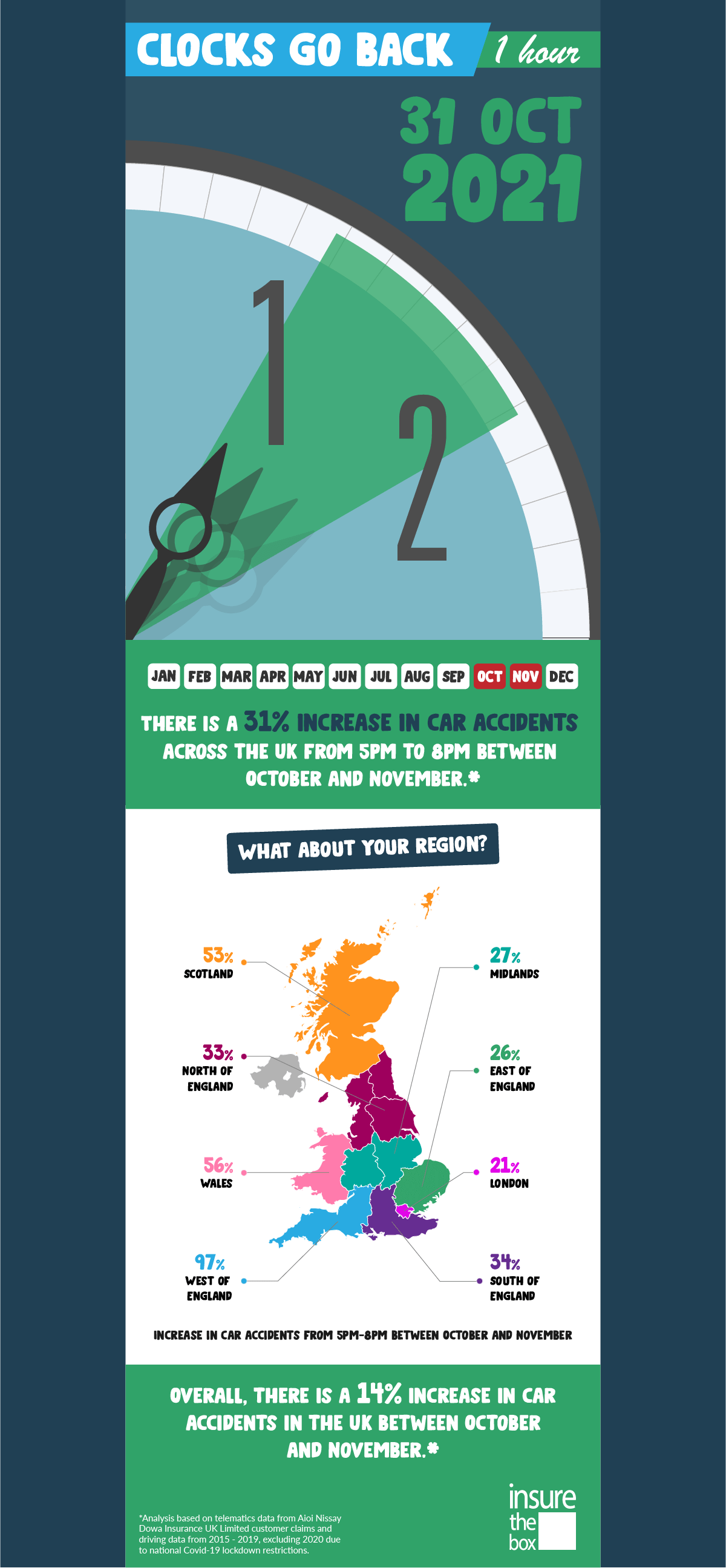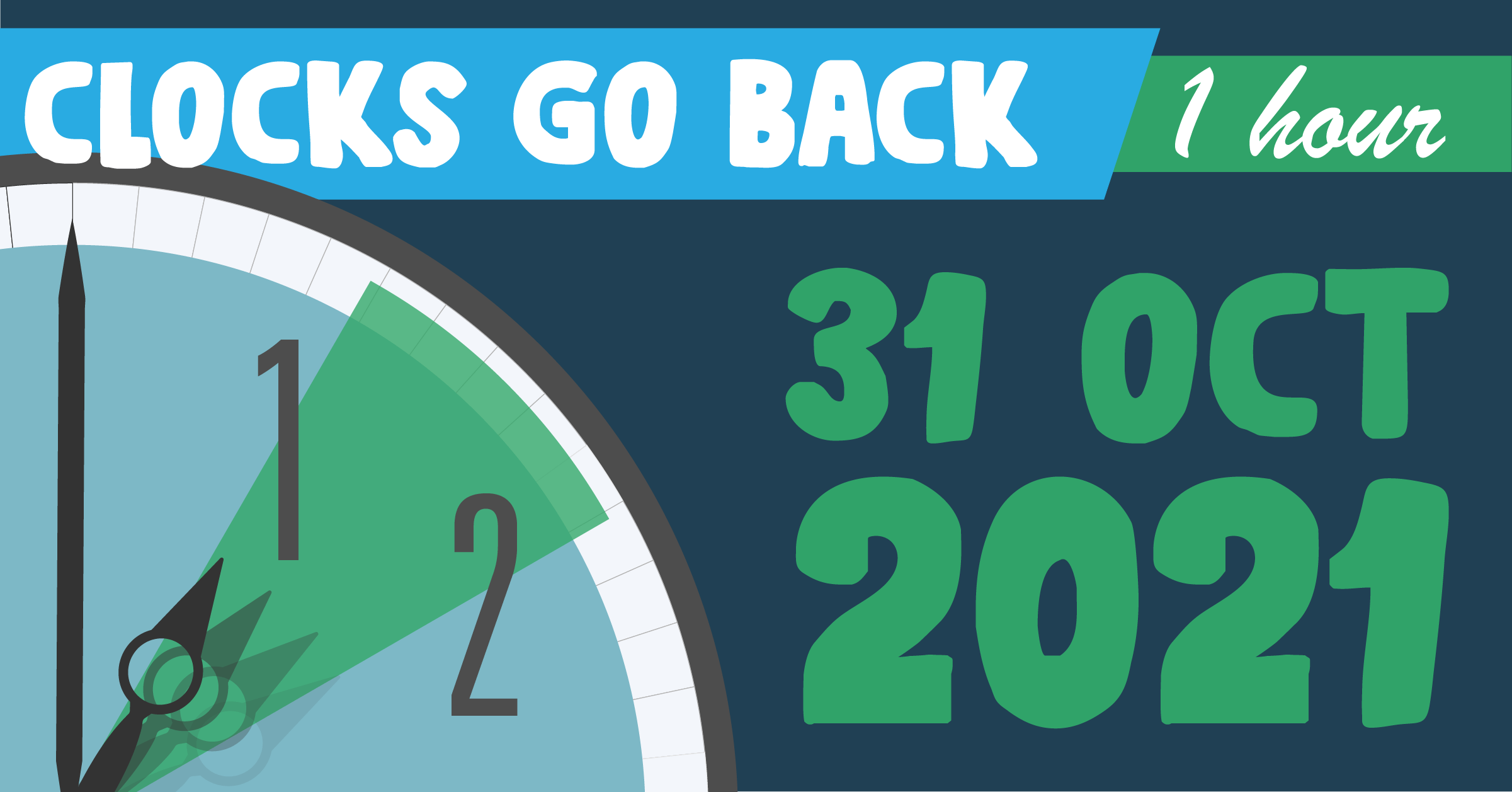The real cost of spending an extra hour in bed this Autumn/Winter
Think you’ve got a grasp on time?
Luckily enough, having to change your clock ‘back’ and ‘forward’ seems to be a thing of the past.
But, we still see familiar problems standing the test of time…
On 31st October 2021 @2:00, we mark the official end of British Summer Time (BST), meaning that your mornings will be lighter, and your evenings will get darker much earlier.
As well as experiencing seemingly darker nights, the months following are likely to bring much more adverse weather conditions, and a near-Artic feeling climate.
But what does this mean for drivers?
How do clocks ‘going back’ affect drivers?
The period following the clocks changing traditionally leads to some unsettling trends on UK roads.
Call it a spooky occurrence that the clocks changing are so close to Halloween, or just a natural coincidence – changes in trends seem to occur soon after clocks ‘go back’.
Take a look at our infographic, below:

How can drivers stay safe in the darker evenings?
Winter is coming which brings about some unique challenges to drivers – especially to those of you who may be relatively new to driving.
Sure, we are all used to driving in the dark – it’s nothing new.
But, as we stretch further into winter, the evenings will rapidly draw in, and make it darker for much longer…
Again, this doesn’t sound like anything too drastic – but colder conditions and these darker evenings can actually make the roads, somewhat more perilous. It’s no secret that you have more visibility in the daylight, so it’s only natural that you’d be able to see less, right?
Of course. So, the ability to drive safely for these darker nights becomes much more important. So, we have created a few steps to help you stay safe on the road as clocks begin to ‘go back’:
- Keep an extra keen eye out for cyclists without lights, and pedestrians who may be wearing darker clothing (or Halloween costumes).
- Turn on your headlights, whatever the time of day.
- Always keep your headlights clean and clear.
- Reduce your speed when visibility is reduced.
- Keep your wind screen clean to avoid increased glare.
- Avoid driving up to the speed limit so that you can quickly react to unexpected situations.
- Keep your interior light off. Pull over in a safe place and only use when car is stationary.
